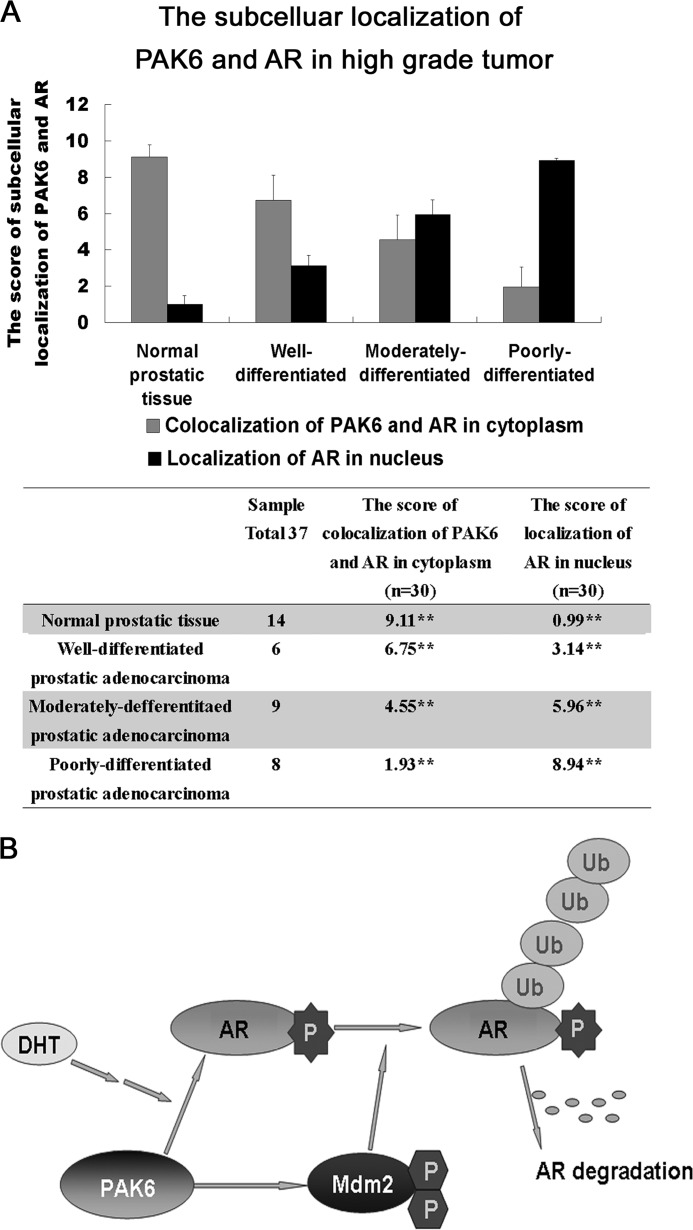FIGURE 8.
A, relationship between PAK6 and AR in prostate cancer. 14 normal prostate, 6 well differentiated, 9 moderately differentiated, and 8 poorly differentiated prostate tumor specimens were collected and subjected to immunofluorescence analysis. The score of immunostaining co-localization of PAK6 and AR in cytoplasm or localization of AR in nucleus was counted from 30 independent visions and determined by intensity (0 to 3) and fraction of stained cells (0 to 4). A total score (ranging from 0 to 12) was obtained by multiplying the staining intensity and fraction scores. ** means p value less than or equal to 0.001 was considered statistically significant according to unpaired t test. B, proposed mechanism for the relation between PAK6, AR, Mdm2, and ubiquitin-proteasome degradation. Upon DHT stimulation, PAK6 obstructs AR nuclear translocation through phosphorylation on AR Ser-578; this phosphorylation enhances the binding between AR and Mdm2. The further phosphorylation of Mdm2 by PAK6 promotes proteasome to recognize the polyubiquitylated AR, leading to AR degradation.

